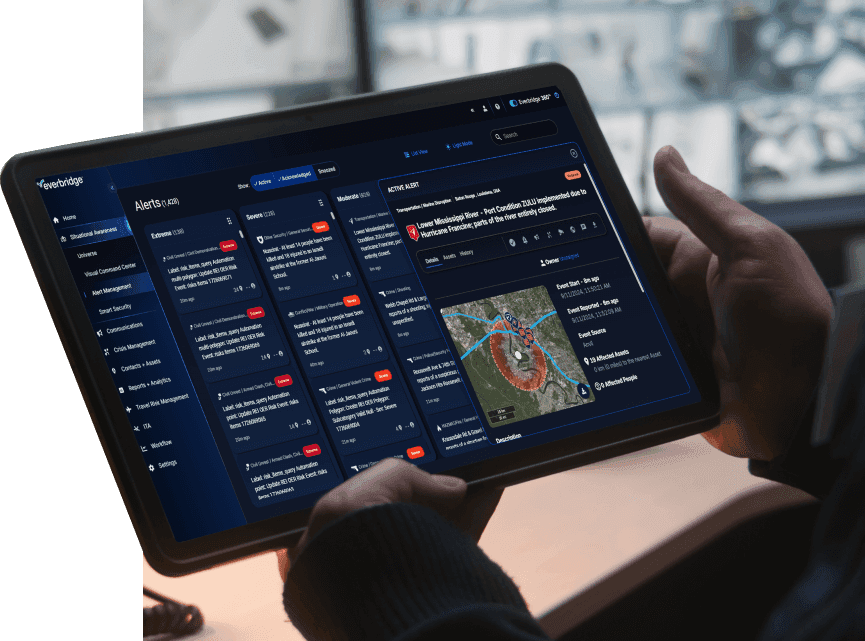RAY BAUM’s Act requires that first responders have the necessary information needed to pinpoint the “dispatchable location,” and quickly reach a 9-1-1 caller regardless of the device they dial from, or their exact location inside a large building.
Whether the calling device is wired, wireless, on-premise, or remote, if it connects to an MLTS it will fall under the FCC’s enforcement. With the recent passing of this legislation, now is the best time to get your enterprise fully compliant and help protect the lives of individuals in times of emergency.
RAY BAUM’s Act requires that first responders have the necessary information needed to pinpoint the “dispatchable location,” and quickly reach a 9-1-1 caller regardless of the device they dial from, or their exact location inside a large building.
The key requirement of this law is that any device that can dial a phone number, “regardless of technological platform used,” should have this capability. Whether the calling device is wired, wireless, on-premise, or remote, if it connects to an MLTS it will fall under the FCC’s enforcement. With the recent passing of this legislation, now is the best time to get your enterprise fully compliant and help protect the lives of individuals in times of emergency.
As with Kari’s Law, the United States Federal Communications Commission (FCC) has committed to widespread enforcement of RAY BAUM’s act with penalties for organizations that do not comply with these important E911 regulations. In addition to these penalties, the risk of exposure to litigation and significant judgments serves as an alarming call to action.
The good news is that compliance isn’t difficult, given the right technology and guidance. In this article, we’ll tell you exactly what you need to know about your responsibilities under this act.
What is RAY BAUM’s Act?
RAY BAUMS is an acronym: Repack Airwaves Yielding Better Access for Users of Modern Services, inspired by the name of the late Ray Baum, a lawyer and congressman who championed this telecommunications policy. The complete Act includes a much broader set of consumer protections to be regulated by the FCC, but Section 506 deals specifically with E911 compliance and defines new standards for multi-line telephone (MLTS) systems.
Every year, there are 240 million 9-1-1 calls made in the United States, in some areas 80% or more are made from wireless devices. Communications technology has rapidly changed to include mobile devices, VoIP, laptop softphones and similar, making it harder for emergency services to pinpoint a caller’s location, compared to a traditional ’hard’ desk phone. As a result, police, fire, or medical services can lose critical response time which could lead to preventable tragedy in the worst cases.
RAY BAUM’s Act requires organizations of all types that operate enterprise phone systems to provide accurate location information to both onsite personnel and the public safety answering point (PSAP)— which is the local emergency call center that responds to 9-1-1 calls.
When did the RAY BAUM’s Act go into effect?
The first piece of RAY BAUM’s Act Section 506, covering wired devices, went into effect on January 6, 2021. Wireless and mobile offsite device coverage went into effect on January 6, 2022.
With compliance dates nearly fully past, it’s a good idea to be proactive and immediately implement a future-proof solution that will protect your remote workers and reduce your risk of liability. To make sure you’re fully covered, choose a comprehensive E911 solution that also addresses the requirements of Kari’s Law, which went into effect on February 16, 2020.
Who does RAY BAUM’s Act apply to?
If your organization owns, operates, rents, leases, or even uses a hosted enterprise Multi-Line Telephone System (MLTS), RAY BAUM’s Act applies to you.
If you are responsible for managing your enterprise telecommunication systems, it is your responsibility to deploy an E911 solution that accounts for all devices, both “hard” and “soft.” As a simple rule, if a device within your network can be used to order a pizza, it must automatically send location information to the PSAP in the event of a 9-1-1 call.
The solution that you choose must deliver very specific information to the PSAP, so first responders can reach the scene quickly, even if the caller is unable to speak. This means that if your company is in a multi-floor building, your E911 solution must provide the PSAP with the address, floor, suite, etc. of the exact phone that called.
If you are unsure about how RAY BAUM’s Act applies to your organization, it’s best to speak to a company with expertise on E911 legislation and technology to make sure you’re fully compliant.
How to be compliant with RAY BAUM’s Act – rules and definitions
RAY BAUM’s Act provides specific guidelines for different device and location types, which your E911 solution must account for. Here’s a quick summary of the most important requirements.
What is a “dispatchable location”?
According to Section 506 of RAY BAUM’S Act, a “dispatchable location” is “the street address of the calling party, and additional information such as room number, floor number, or similar information necessary to adequately identify the location of the calling party ((Federal Communications Commission. (2019))”.
Fixed MLTS calls
- Rule: “We therefore conclude that providing dispatchable location for 9-1-1 calls from fixed MLTS devices used on-premises is readily achievable. We also conclude that dispatchable location from fixed MLTS devices should be provided automatically and that the street address associated with the fixed end-point should be validated ((Federal Communications Commission. (2019))”.
- Compliance Date: January 6, 2021
Non-fixed MLTS calls
- Rule: “MLTS providers must convey automated dispatchable location for such devices when technically feasible but may rely on the MLTS end user to provide or confirm dispatchable location information manually, e.g., by responding to a system prompt ((Federal Communications Commission. (2019))”.
- Compliance Date: January 6, 2022
Off-premises 911 calls
- Rule: “For off-premises 911 calls, the MLTS operator or manager must provide (1) dispatchable location, if technically feasible, or, otherwise, either (2) manually-updated dispatchable location, or (3) enhanced location information, which may be coordinate-based, consisting of the best available location that can be obtained from any available technology or combination of technologies at reasonable cost ((Federal Communications Commission. (2019))”.
- Compliance Date: January 6, 2022
If these rules seem complex, don’t worry. E911 compliance doesn’t have to be difficult. Everbridge can implement a comprehensive solution, tailored to your business, that provides both simplicity and peace of mind.
RAY BAUM’s Act and the FCC
The FCC is responsible for the enforcement of RAY BAUM’s Act, Kari’s Law, and any other regulations that involve telecommunications. Organizations will be watched closely for violations of these new E911 requirements, as well as the manufacturers and vendors who install or manage these MLTS systems.
For more information regarding your responsibilities as an organization, and the FCC’s interpretation of these laws, review the FCC Report and Order.
What’s the difference between RAY BAUM’s Act and Kari’s Law?
Kari’s Law states that all enterprise MLTS devices must connect to 9-1-1 without dialing a prefix such as “9,” and requires notification of 9-1-1 calls to be sent to internal personnel such as security teams or reception. RAY BAUM’s Act mandates that a “dispatchable location” of any 911 call be sent to both emergency services (PSAP) and internal personnel. Non-compliance with these rules could result in a fine of up to $10,000 plus $500/day for the period of non-compliance. Luckily, with the right E911 solution, it’s easy to achieve 100% compliance across both pieces of legislation. Learn more about Kari’s Law.
What do I do next?
Now is the best time to get started on your journey to 100% E911 compliance. Getting up to speed doesn’t need to be difficult, but you need to choose a solution that considers the specific legislative and technological needs of your organization.
Everbridge can help your enterprise quickly comply with the new regulations set by RAY BAUM’s Act as well as Kari’s Law. Our cloud-based technology not only reduces critical time in locating a person who has dialed 9-1-1, but it also allows your enterprise to embrace mobility without additional risk. We make the path to compliance easy and will help keep you compliant as laws and technology continue to evolve.
Download our free handbook now, “Fast Track to E911 Compliance,” and take the first step to compliance and helping to safeguard the health and safety of everyone inside your organization.

